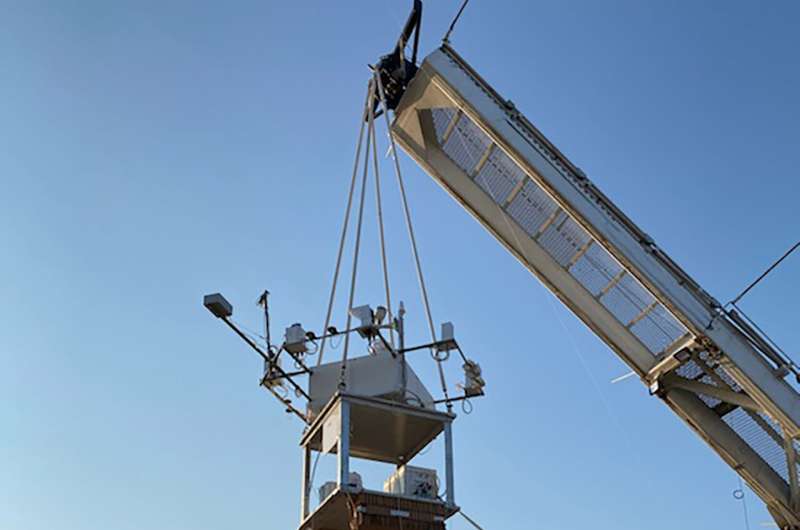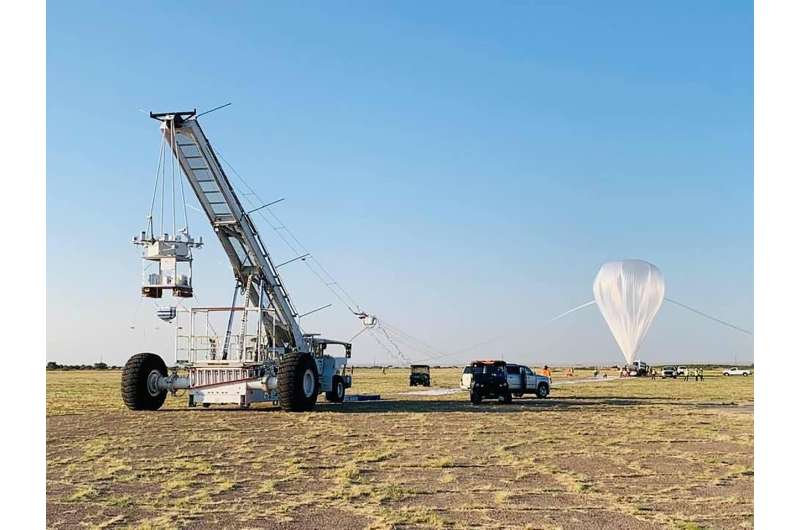"
HASP can support up to 12 student-built payloads. It houses and provides power, mechanical support, interfacing, data downlink, and command uplink communications for the instruments. Launched from NASA's balloon launch facility in Fort Sumner, flights typically last 12 to 15 hours, flying in the stratosphere at an altitude of approximately 23 miles.
Since 2006, the HASP program has selected more than 182 payloads for flights, of which 144 have launched and 118 have been successful. The program has involved more than 1,400 students from 29 U.S. states and territories and four international teams.

Past student groups have flown instruments to flight test compact satellites and prototype long-range communication devices, perform space science experiments, sample particles at the edge of space, perform remote sensing experimentation, test rocket nozzles, and measure infrasound to correlate with geophysical events.
This year's student teams include:
- Arizona State University's HART (High Atmosphere Research Team) will attempt to determine if there is an identifiable correlation between surface level hydration and neutron counts, and a correlation between atmospheric hydration and atmospheric neutron counts.
- University of the Virgin Islands' student team will test their low-cost design for gamma-ray burst detections, which will be a major part of their 3U CubeSat payload.
- Montana State University's student team will continue utilizing HASP for testing major components for the upcoming Nationwide Eclipse Ballooning Project during the solar eclipses in 2023 and 2024.
- Universidad Nacional de Ingeniería in Peru will improve on last year's project to analyze the concentration of stratospheric aerosols, ozone, and pollutant gases.
- Iowa State University Cysol team will prototype a new payload to measure the 30-centimeter wavelength solar flux, or light energy, that will be the cornerstone of their CySAT CubeSat program.
- University of North Florida and University of North Dakota will fly their payload for the ninth time with HASP, continuing to improve upon their design for measuring the ozone within Earth's different atmospheric layers.
- College of the Canyons' team Ourania will focus on the detection of antimatter particles in the upper stratosphere, along with the added inclusion of artwork on the exterior to measure the reaction of different pigments and materials to the light and temperature in the stratosphere.
- University of Maryland's GASP (Generalized Aerosol Sampling Payload) will investigate large-scale dynamic drivers of stratosphere-troposphere exchange events, including mountain-generated gravity waves and subsequent mixing and dynamics in the stratosphere.
- Arizona State University's HADHR (High Altitude Deuterium to Hydrogen Receiver) team will fly an updated version of last year's payload with a primary goal to fly a submillimeter wave receiver and spectrometer, provided by Arizona State University and NASA's Jet Propulsion Laboratory, to measure the deuterium to hydrogen (D/H) ratio within the atmosphere and compare these measurements to the D/H ratio measured by orbiting satellites.
- The 10th spot will host extra student payloads from Colorado Space Grant Consortium's RockOn student workshop.
Iowa State University and the University of the Virgin Islands will be flying for the first time on HASP.
For more information on the Wallop's Balloon Program Office, visit http://www.nasa.gov/scientificballoons.



